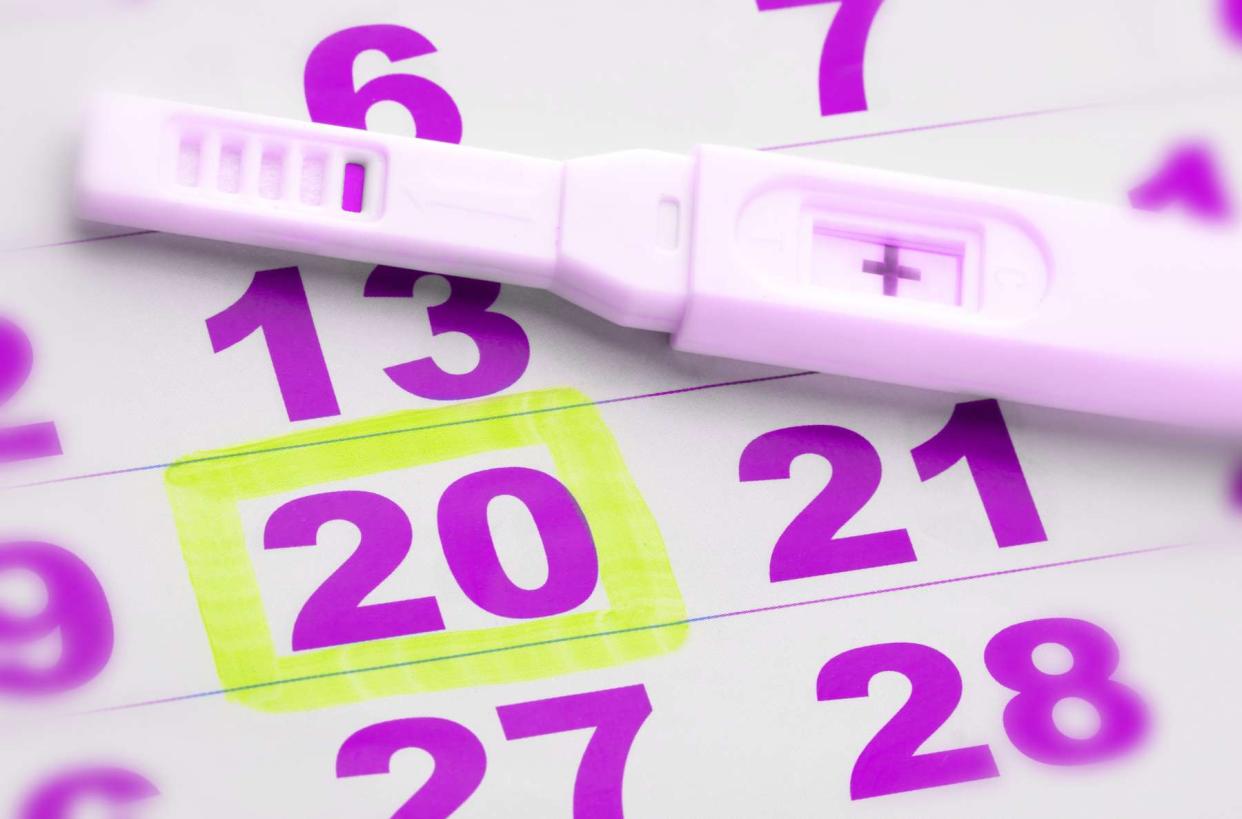Ovulation Cycles and Why They Can Be Confusing

Nomad_Soul/Shutterstock
If you're trying for a baby, you've probably learned two important facts about conception: 1) a person is most likely to conceive around ovulation and 2) pinpointing the date of ovulation isn't easy. That's because ovulation doesn't always happen like clockwork, especially if you don't have a standard 28-day menstrual cycle. Here's everything you need to know about ovulation cycles, with tips on figuring out your moments of peak fertility.
Your Cycle and Ovulation
Your menstrual cycle has four phases: menstrual, follicular, ovulation, and luteal. They each work together to form a pregnancy.
Menstrual Phase: Your menstrual cycle begins on the first day of your period. Since your body didn't get pregnant during your last cycle, it sheds its uterine lining, along with blood and mucus.
Follicular Phase: "This is where eggs grow inside a fluid-filled sac called a follicle," says Rashmi Kudesia, M.D., an OBGYN and reproductive endocrinology and infertility specialist at Houston Methodist and Houston IVF. A hormone called follicle-stimulating hormone (FSH) is behind the action. The one egg that develops most fully (the dominant egg) will ovulate in the next phase, says Dr. Kudesia.
Ovulation Phase: Ovulation happens when the ovary releases one mature egg into the fallopian tube. The egg only survives about 12-24 hours in the reproductive tract. However, sperm survives in the fallopian tube for up to five days—meaning that a person has the greatest likelihood of conceiving on the day of ovulation and five days beforehand. (In rare instances, they body releases more than one egg, which can lead to fraternal twins).
The Luteal Phase: If sperm fertilized the egg during ovulation, it attaches to the uterine lining to form a pregnancy. If not, the egg is reabsorbed into the uterine lining and subsequently shed with a woman's period. "The luteal phase extends from ovulation to the next period or a positive pregnancy test," explains Dr. Kudesia. "In general, the luteal phase is consistently two weeks long."
How to Calculate Your Ovulation Cycle
Now that you know about the phases of your menstrual cycle, you're probably wondering when ovulation happens. "The luteal phase is generally about 14 days long. Since this part of the menstrual cycle is fairly stable, we can predict when ovulation occurs by subtracting 14 days from your last menstrual period," says Staci Pollack, an OBGYN at the Division of Reproductive Endocrinology & Infertility at Montefiore Health System. In other words, individuals can expect to ovulate 14 days before the start of their next period.
Dr. Pollack says that figuring out your cycle length (with a tracking app or paper journal) can help you predict ovulation. Simply take your cycle length (28 days, 27 days, 30 days, etc.) and subtract 14 days. Here are some examples:
Normal 28 day cycle = ovulation occurs around day 14
27 day cycle = ovulation occurs around day 13
30 day cycle = ovulation occurs around day 16
For those with unpredictable cycle lengths, the window of ovulation won't be consistent. "If your cycles are anywhere from 28-32 days, you will ovulate somewhere around day 14 to day 18," explains Dr. Pollack. Keep in mind that people are most likely to conceive on the day of ovulation and five days beforehand.
Of course, ovulation can be unpredictable, and the "14 day" concept isn't always accurate. Plenty of methods and tools exist to help women calculate their most fertile days. These include ovulation predictor kits (OPKs), fertility monitors, basal body temperature (BBT) readings, cervical mucus monitoring, and more. Check out this article to learn more about the ways to calculate your fertile window.
A note about ovulation cycles and irregular periods
A "normal" menstrual cycle is anywhere from 21 to 35 days long. Very irregular periods may signal that you aren't ovulating regularly. See a gynecologist or fertility specialist if this applies to you.

